18
2024
-
04
What are the national standards for galvanizing requirements in mechanical and electrical installation materials?
Classification:
【Summary Description】
National standard galvanizing requirements
Galvanizing metal surfaces, as an important surface protection, rust prevention and anti-corrosion measure, is the most widely used, economical and effective method. It is often found in the materials and equipment of our electromechanical engineering construction. General thin steel sheets, steel pipes (including water gas steel pipes, seamless pipes, spiral pipes, GDJ line pipes, etc.), and bridge materials generally require galvanized protection. We will make a simple comparison of the requirements for galvanizing according to national standards.
Galvanizing is divided into two processes: hot dip and cold dip.The main material used in our electromechanical engineering is usually hot dip galvanizing.
Hot dip coating is a process in which steel or cast iron parts that have undergone surface treatment are immersed in a high temperature molten zinc solution to form zinc alloy and zinc iron coatings on their surface.
Cold plating, also known as electroplating, is a chemical substitution reaction that replaces the metal elements on the metal surface with zinc to form a coating. The thickness of the zinc layer generally does not exceed 10 microns.
Hot dip galvanizing vs. cold dip galvanizing
--01--
Generally speaking, hot dip galvanizing is thicker, more corrosion resistant and of better quality.
The galvanized zinc layer is thin, with relatively poor adhesion, and its rust prevention ability is not as strong as hot dip galvanizing.
--02--
Secondly, the hot dip galvanized surface is darker, grayish in color and lacks gloss.
Electroplating has a bright surface and a better color than hot dip galvanizing.
be careful
For galvanized steel plates (commonly used thickness between 0.5mm and 1.5mm), mechanical and electrical engineering is mainly used to make smoke ventilation and exhaust ducts, and there is a high demand on site, all of which are hot dip galvanized processes. Galvanization can be divided into two types: standardized and non-standard, only due to the differences in the process, resulting in different crystalline images of the coating on the surface, and does not affect its performance.
In the national standard of GB/T 2518-2008 for galvanized steel sheets, there are clear provisions for the galvanized layer, with a minimum of 80 grams per square meter, marked as Z80 in the design drawings. Some designs have higher requirements for corrosion resistance, such as 120 grams, 275 grams or even 500 grams per square meter. For projects such as Huawei E2C and Shenzhen Metro Line 9, zinc high layer iron sheets are designed, so that the specific thickness of the selected galvanized layer must meet the design requirements in the drawings.
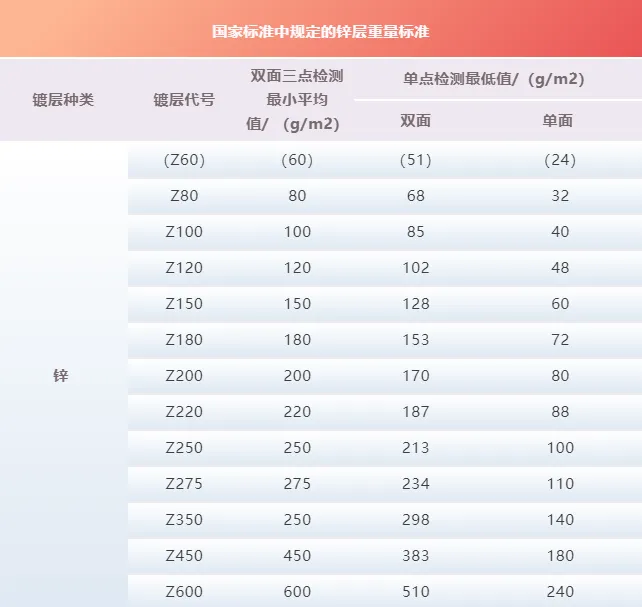
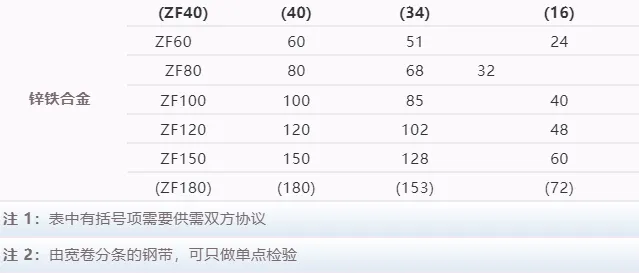
In specific on-site inspections, we usually use a coating thickness meter (iron-based probe) to measure the thickness of the galvanized layer. This 80g refers to the sum of double-sided zinc layers of sheet metal reaching 80g.
Measurement of galvanized thickness usually involves taking 3 pieces of each specification of the plate, with an area not exceeding 1cm on the galvanized steel plate ² Three measurements of galvanized thickness were made on both sides of the inspection surface, with the average value obtained the local galvanized thickness and the average value of the five local galvanized thicknesses measured on the steel plate was the average galvanized thickness. The result measured by the coating thickness meter is the thickness, in µm, and the weight of the galvanized layer = thickness x 7.14. The unit of this thickness is µm, and the unit of weight obtained is grams. In fact, 7.14 is the density value of zinc.
For the number of samples to test, we usually select 3 pieces for each type of plate on site. In fact, national standards have specific requirements for the amount of sampling, as shown in the table below:
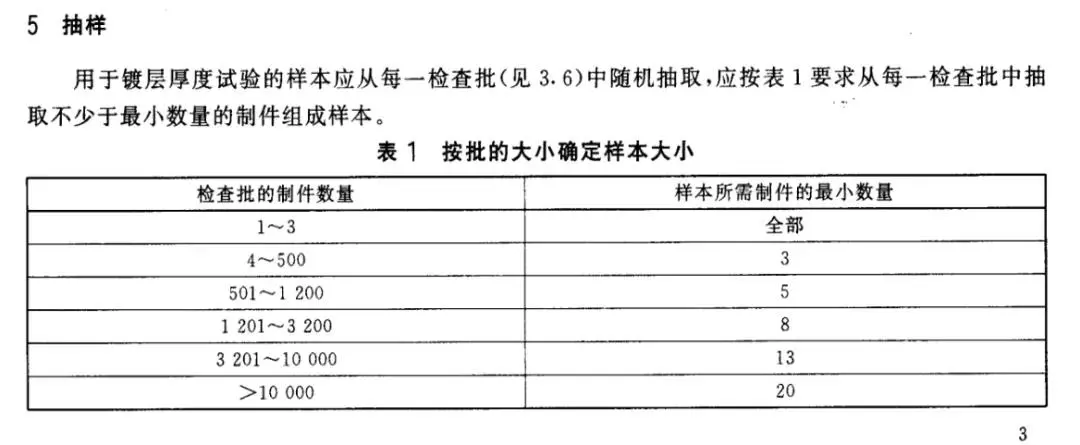
Galvanized steel pipe is a basic material commonly used in on-site construction, which is used in various professions. We also use hot galvanized steel pipes, and the latest national standard GB/T 3091-2015 has clear regulations about the thickness of galvanization:
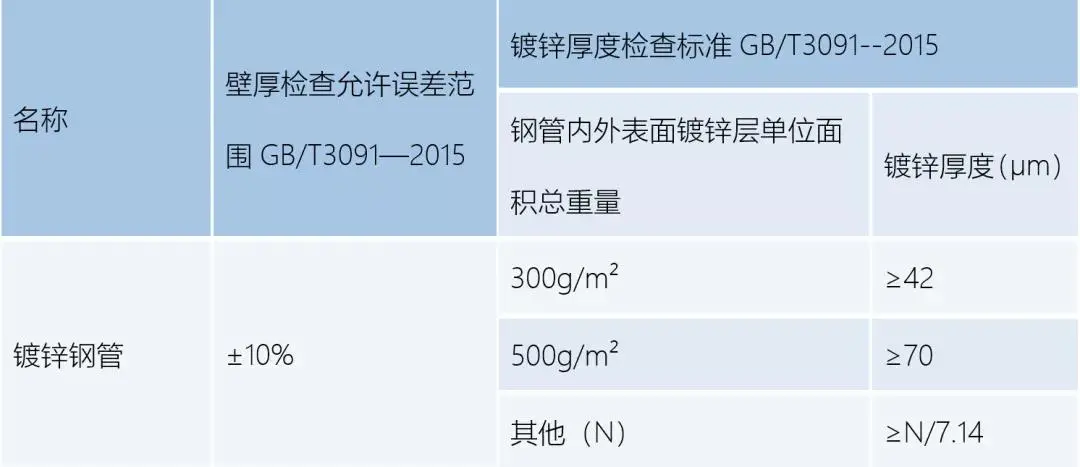
Simply put, it can be described as the requirement that the galvanized layer on the surface of the steel pipe be not less than 300 grams, and the requirement that the high zinc layer be not less than 500 grams The specific drawing requirements will prevail, and the converted thickness is 42 microns and 70 microns, respectively. It should be noted that the weight here is the total weight of the zinc layer on the inner and outer surfaces, and the area is also the total area of the inner and outer surfaces. Therefore, this not less than 300 grams refers to a single side not less than 300 grams, which is different from the calculation of galvanized steel sheets.
The method for calculating the area provided for in the Appendix to the national standard is as follows:
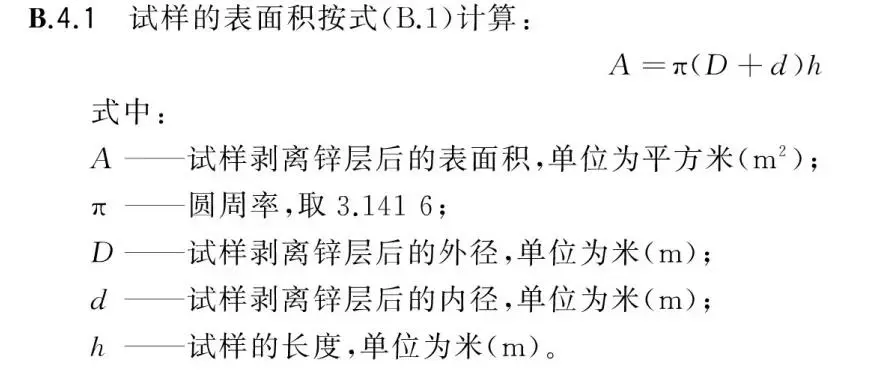
As support for laying electrical cables, cable trays are extremely common in our installation projects. Normally, according to the different needs of the project, various layers of surface protection are designed, including ordinary spray painting, electrostatic spray, hot galvanizing, electroplating and other processes. According to Table 10 of the national standard JB/T 10216-2013 "Cable Trays for Electric Control and Distribution", electroplating is greater than 12 μ m. Hot plating exceeding 65 μ m. pulverização superior a 60 μ m. Pode ser medido usando um medidor de espessura.
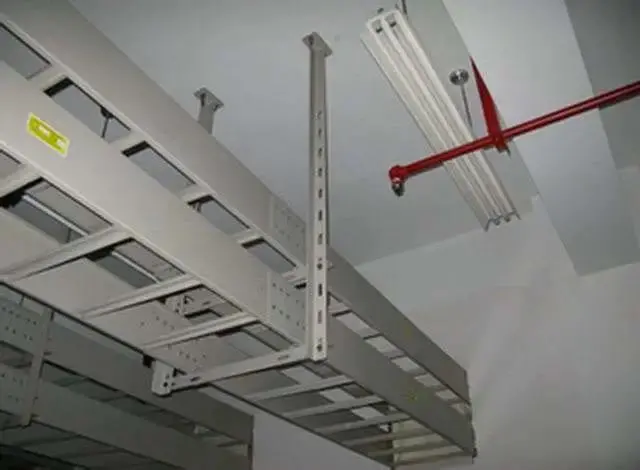

Because it is difficult for galvanized galvanized sheet to achieve a side 12 μ The thickness of the zinc layer is m, so when galvanized cable trays are indicated in the drawing, they are usually made of hot dip galvanized plates, achieving a cold plating of 12 μ The zinc layer of m is generally considered qualified on site. When the diagram indicates that the bridge is hot dip galvanized or hot dip galvanized, a one-sided zinc layer of 65 μ m is required. The cost of galvanizing will be very high.
A more accurate method to detect the thickness of the galvanized layer on metal surfaces is the weighing method, which involves immersing the galvanized specimen in a zinc removal solution to dissolve the zinc layer on the specimen surface. By comparing the weight of the specimen before and after zinc removal, the total weight of the zinc layer in the specimen can be calculated, and the weight of zinc per square meter of the specimen can be calculated. This method can be applied to formal test reports and arbitration disputes.
In engineering practice, the terms 'hot dip galvanisation' and 'hot dip galvanisation' should be clarified as follows:
The term "hot dip galvanizing" is mentioned in the national standard GB/T 13912-2002 "Technical requirements and test methods for hot dip galvanized coatings on metal coated steel parts", specifically: "3." "Hot dip galvanizing is a process and method of immersing pretreated steel or cast iron parts in molten zinc solution to form zinc alloy and/or zinc iron coatings on their surfaces." The term "hot dip galvanizing" is not mentioned in it. According to the original standard GB/T 13912-92 "Technical requirements for hot dip galvanized coatings on metal coated steel products", the term "hot dip galvanization" is mentioned in Chapter 3: "3." "Hot dip galvanization is a process and method of immersing steel parts or molten zinc solution castings to form a zinc iron alloy or zinc-zinc alloy coating on its surface." The term "hot dip galvanization" is not mentioned in it.
From the terms "hot dip galvanization" and "hot dip galvanization" provided in the two different versions of the above standards, it can be seen that although the expressions of the two terms are slightly different, the substantive content is consistent, indicating that the original term "hot dip galvanization" has been replaced by "hot dip galvanization" in the new standard. Therefore, it can be explained that "hot dip galvanized cable tray" and "hot dip galvanized cable tray" are the same type of cable tray, and "hot dip galvanized cable tray" is the exact term of the new standard.
Related recommendations



